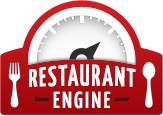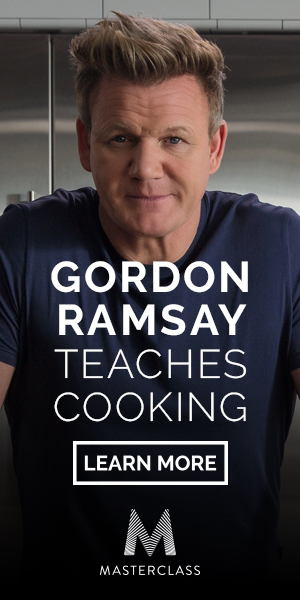5 Restaurant Websites Worst Practices
What’s the first thing you think about when the subject of restaurant websites comes up? Generally speaking… They’re bad. Real bad. This article will break down some restaurant websites worst practices that are unfortunately far too common.
For reasons us professional web designers may never understand, restaurants are notorious for having poorly designed websites that are hard (or impossible) to use.
It’s particularly unfortunate because it is more important than ever for a restaurant to have a strong web presence in order to be successful. Customers are using the web to search, discover, review, book reservations, and hopefully recommend your restaurant to friends. And today they’re doing all of that on their mobile device when they’re out on the town, looking for a place to eat.
If you’re a restaurateur with a restaurant website, you must ask yourself: Is my restaurant taking full advantage of it’s web presence? Well, today well take a hard look to see if your site is falling victim to restaurant website “no-no’s”. If there are things in this list that describe your website, it’s safe to say you’re turning website visitors off, and losing potential customers (as well as word of mouth via social media).
So let’s get on with it! Here is your list of restaurant website worst practices:
1. Flash
You’ve heard it before, but since its still so prevalent, let me say it again: Don’t use Flash on your restaurant website.
Why? For starters, most mobile devices, including iPhones and iPads, can’t see Flash content. So you’re losing out on thousands of website visitors right out of the gate.
Next reason? Flash is not SEO-friendly. Google, Bing and Yahoo rely on the text and keywords within your website to present your restaurant in search results. Text inside Flash websites is effectively invisible to search engines. They can’t read it. Therefor, Flash websites do nothing to help your standing in search engines.
Finally (as if you need yet another reason not to use Flash), Flash websites are difficult and costly to maintain. Every time you want to update your home page, change your menu, announce a new special, promote events, you need to update your website. If its done in Flash, chances are you need to hire a Flash designer for every single update. Non-flash websites can have a content management system (CMS) such as WordPress, which gives you – the restaurant owner – the ability to manage and update your website easily and without ongoing costs.
2. No Mobile Website
Don’t have a mobile website for your restaurant? You’re leaving visitors — potential customers — on the table. Today’s web has gone mobile and so have users. They want to check you out when they’re on the go, so your restaurant needs an effective, fast-loading, quality mobile website to turn your mobile visitors into walk-in customers to your restaurant.
Getting rid of your Flash restaurant website and going with a more accessible design is a good first step. But this alone won’t give you a mobile website. Your site must also be optimized for small screens and touch interfaces. Most restaurant websites are still too hard to use on mobile devices, due to the text and navigation links being too small or inaccessible on mobile smart phones.
Prfessional web designers use a technique known as Responsive Web Design, which ensures that your website scales and adapts to any screen it is viewed on. This is what your restaurant website needs in order to take full advantage of the mobile web.
3. Poor Usability
There’s a reason someone created an entire website to catalog the frustrations of visitors to restaurant websites. Most restaurant websites fail to meet the needs of their users. They disregard usability in favor of… well… I’m not quite sure. Entertainment? ”Ambiance”?
First, what is Usability? Usability is the ease-of-use of whatever we’re presenting — in our case, a restaurant website. Usability focuses on meeting the user’s (in our case, visitors to your restaurant website) needs to help them be successful when using your website.
What do your visitors need? Their primary goals when visiting your website are:
- Get a quick (as in seconds) first impression of your restaurant.
- See what’s on your menu, with prices.
- Find out where you’re located and/or make reservations.
- Slow-loading, obtrusive, and unimpressive Flash intro animations. These only serve to delay your users, causing them to leave your site immediately.
- Menu is a downloadable PDF file, which most people can’t even open — especially if they’re on a mobile device.
- Address and contact info is hidden away somewhere or it’s inside a Flash website where it can’t be cut and pasted into a Google map (or there isn’t a link to a Google map).
4. Lack of Fresh Content
5. Inconsistent Design Quality
This is something I personally notice all the time. I take my wife out to an elegant local restaurant, where they have a beautifully designed interior decor, professionally printed menu, talented staff, and amazing entrees. Then, since I’m a web designer, I curiously go check out the restaurant’s website only to find annoying music and obtrusive Flash animations, amateurish page layouts, and usability failures all over the place. It amazes me that such a nice restaurant can disregard their website like this.
But more often it plays out like this: I go online to search for a nice new restaurant to take my wife out for our anniversary. I usually start on Yelp or Zagats and sift through some listings. I find a place that looks good based on some reviews, but other reviews leave some questions. So I click to the restaurant’s website and I’m greeted with a disastrous, outdated, and unusable site. This decision just became very easy. We’re not dining here tonight.
It’s more important than ever that a restaurant values the work of a professional web designer. If your expertise is in serving amazing food and creating an elegant dining experience, then focus your effort where you shine. Let a professional designer who’s expertise is in crafting highly usable and sustainable websites handle your web presence. The best web consultants can be costly. But the good news is, there are now quality solutions who’s results rival those of high-end web design agencies.
How to Improve Your Restaurant Website
Fear not. In our next post, we’ll break down a list of best practices and ways to make sure your restaurant website lives up to it’s potential. Stay tuned!




Web site helps restaurants to attract customers.
نمای ساختمان–اجرای نمای کامپوزیت–کرکره برقی–نمای کامپوزیت